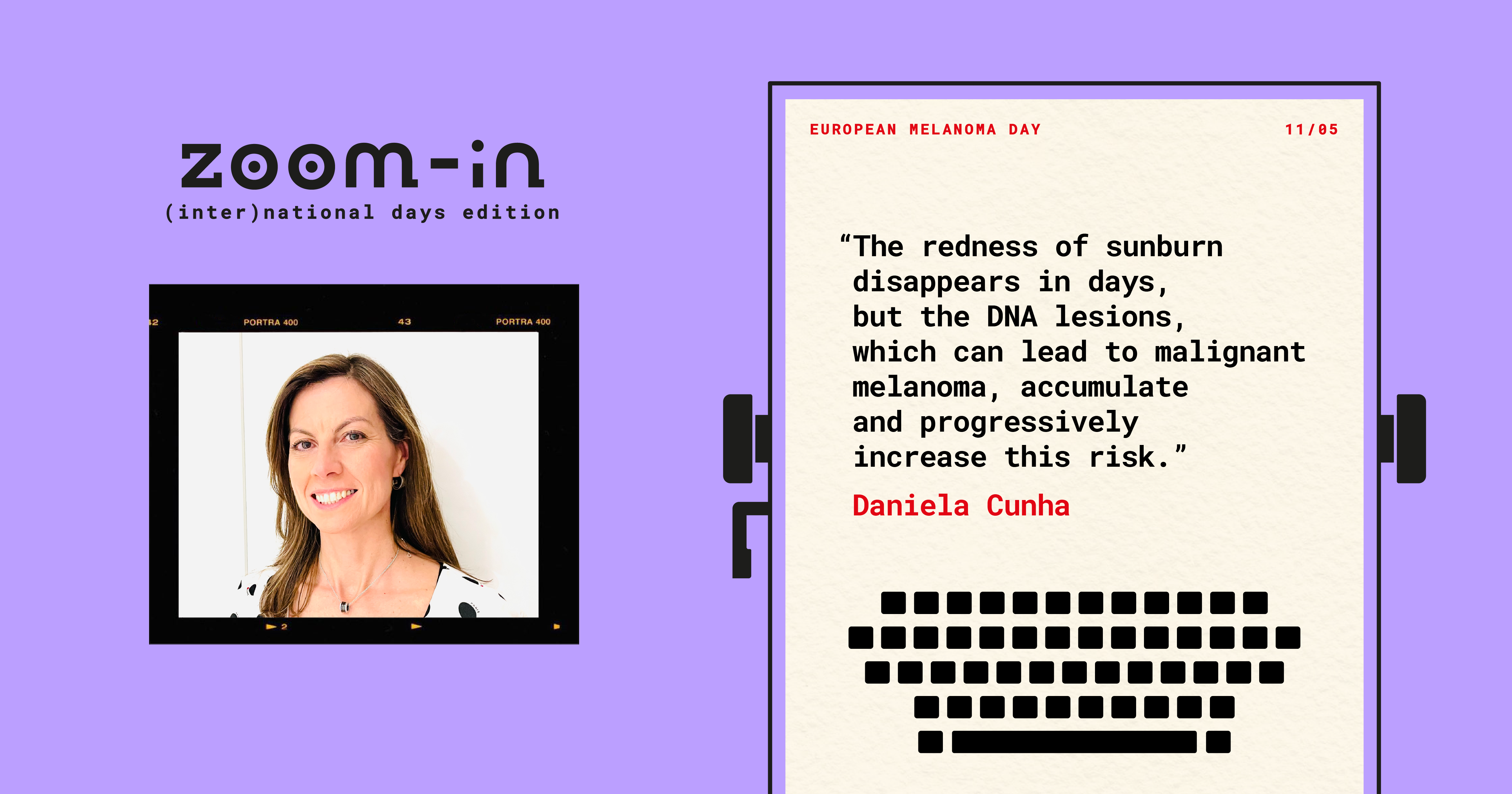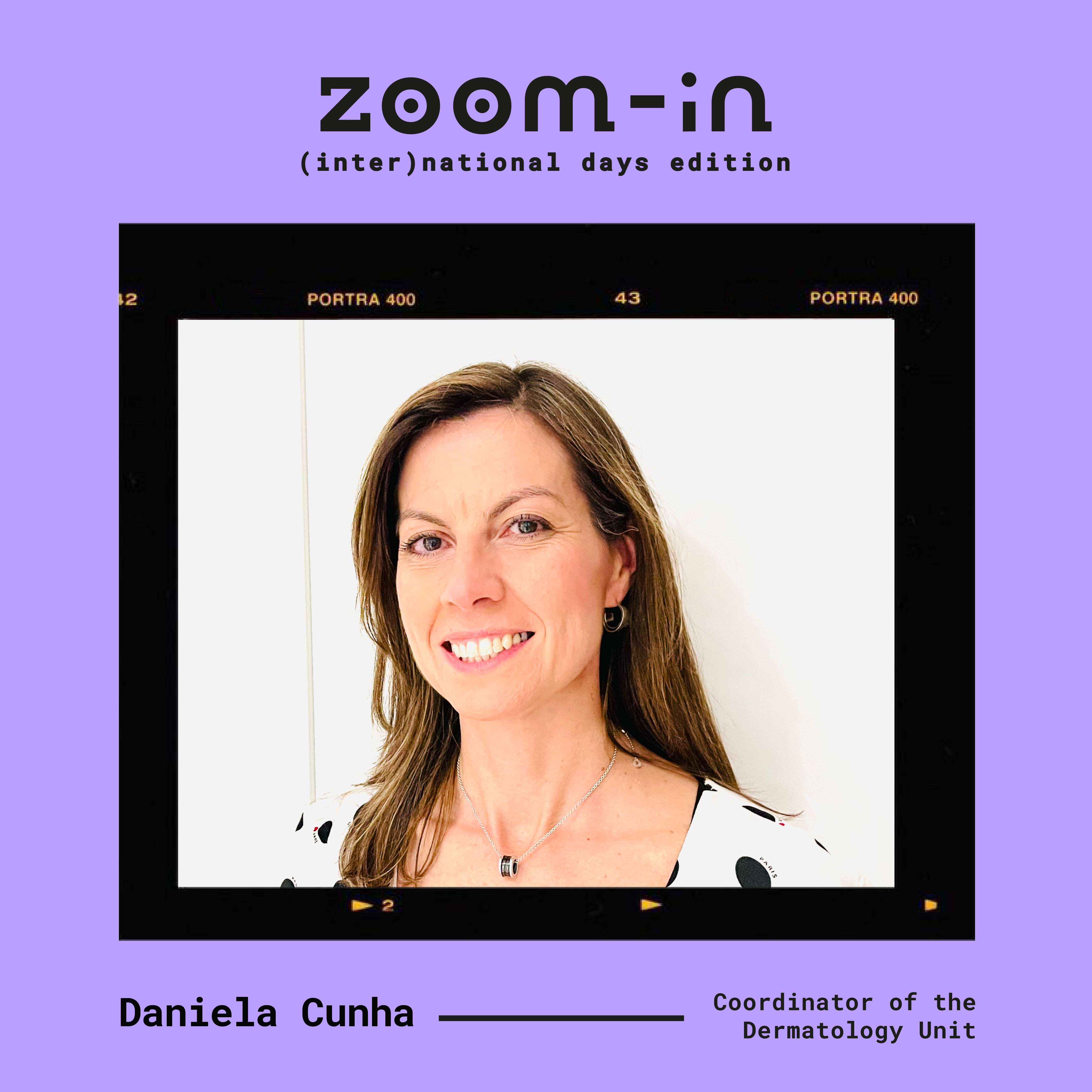Since 1999, 11th May has been in the medical calendar as European Melanoma Day (or simply ‘Euromelanoma’). Originating in Belgium, 24 countries now participate in this campaign, which highlights the importance of preventative action, early diagnosis, and appropriate treatment in the battle against skin cancer.
In this edition of Zoom-In, Daniela Cunha, coordinator of the Champalimaud Foundation’s Dermatology Unit and Mohs surgeon, kindly answered our questions about her work. From early on in her professional career, Daniela developed a special dedication to skin cancer. After her surgical training at the St John's Institute of Dermatology, she has established herself as a Mohs surgeon in Lisbon for the past 12 years. She is particularly dedicated to Malignant Melanoma, following therapeutic innovation in this area. In addition to her clinical work focused on skin cancer, she also conducts research in this field. She has a special interest in the immunopathology of skin cancer, seeking to identify new potential therapeutic targets. She also prioritises innovation in non-invasive imaging techniques to optimise clinical diagnosis and surgical treatments, seeking to improve the quality of life and survival of patients with skin cancer.
Q1. One of the key aims of European Melanoma Day is to raise awareness: what exactly should more people be aware of regarding melanoma?
Prevention and early diagnosis: the prevention of melanoma lies in the adoption of healthy habits of living in the sun; early diagnosis depends on obtaining medical help at an early stage of the disease. Observation of the skin allows the identification of alterations that may suggest the appearance of a malignant melanoma, such as the modification of a pre-existing mole or the appearance of a new, rapidly growing mole, with more than one colour (for example brown and black), with an irregular or asymmetric shape and especially a mole that is distinct from our pattern of signs - the "ugly duckling". These are warning signs that should call for specialised observation. Self-surveillance does not, however, dispense with regular skin observation by a Dermatologist, particularly in people with risk factors for malignant melanoma or over the age of 50.
Q2. Are there any particular risks or behaviours that people should bear in mind in order to reduce the risks of melanoma?
Malignant melanoma is a skin cancer that is strongly related to intense sun exposure, in particular sunburn. It should be noted that when the skin turns pink or red after exposure to the sun, this is already a form of sunburn. Therefore, the main preventive measures are based on the adoption of healthy behaviours when we are exposed to the sun:
- Avoiding prolonged exposure at risk hours (in Portugal, from 12pm to 4pm). In different latitudes, these hours can vary and we must then follow the rule of the shadow: if our shadow is smaller than our height, we are at risk;
- The best protection is clothing: a hat with brims and ultra-violet (UV) protective glasses;
- In areas not protected by clothing, sunscreen should be applied to ensure that the whole exposed area is adequately covered, and it should be reapplied every 2-3 hours if you remain in sunlight or after bathing;
- People with fair skin, light/red hair and light eyes, as well as people with many moles (>50) are at greater risk, so care should be intensified in these groups;
- In order to identify a melanoma early, self-observation of the whole skin every 2 months and observation by a dermatologist at regular intervals (depending on individual characteristics) is recommended.
The risk associated with sunburn in childhood or adolescence is higher than in adulthood. However, the effects of sun exposure are cumulative throughout life. The redness of sunburn disappears in days, but the DNA lesions, which can lead to malignant melanoma, accumulate and progressively increase this risk.
Q3. Are there any plans to commemorate European Melanoma Day at the Champalimaud Foundation’s Dermatology Unit?
Euromelanoma Day is a European initiative resulting from the concerted efforts of Dermatologists at European level. It is a date dedicated to raising awareness about Malignant Melanoma and takes place in May, a time when in Europe the tendency towards sun exposure increases along with the rise in UV radiation intensity. During this month, the Dermatology Units involved in the initiative make available one day dedicated to skin cancer screening. The screening is aimed at the general population, especially at the groups at greatest risk.
Edited by John Lee, Content Developer of the Champalimaud Foundation Communication, Events and Outreach team.



